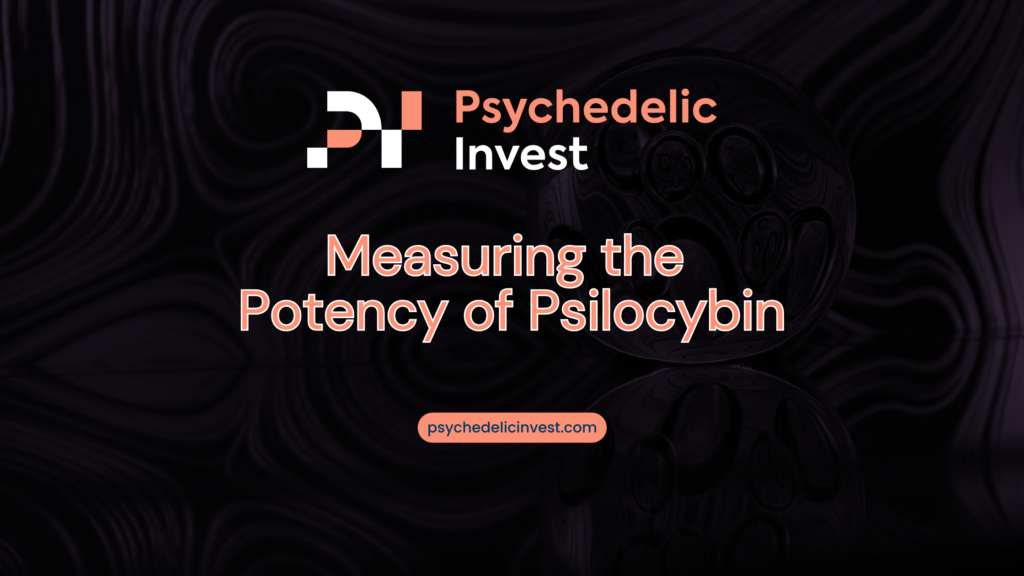Psychedelics
There’s a New Way To Measure the Potency of Magic Mushrooms
A collaborative effort among scientists from the University of Texas at Arlington, Scottsdale Research Institute in Phoenix, Shimadzu Scientific Instruments…

A collaborative effort among scientists from the University of Texas at Arlington, Scottsdale Research Institute in Phoenix, Shimadzu Scientific Instruments in Maryland, and Millipore-Sigma in Round Rock, Texas, has led to the development of a new method for quantifying the potency of psilocybin and psilocin. These compounds are found in Psilocybe Cubensis, a type of magic mushroom recognized for its medical potential in the scientific community.
The Significance of the Discovery
The method, which was detailed in a recent issue of Analytica Chimica Acta, represents a significant advancement in psychedelic research, enabling more precise control over dosage and quality in clinical settings. “These legislative changes are expected to facilitate further research and potential clinical applications,” remarked Kevin Schug, Shimadzu Distinguished Professor of Analytical Chemistry at the University of Texas.
The Role of Psilocybin and Psilocin
Psilocybin itself is not psychoactive until it is converted into psilocin, which strongly influences the 5-HT receptors in the brain, responsible for its psychoactive effects. This breakthrough is particularly timely as medical and therapeutic uses of psilocybin gain legal acceptance in various jurisdictions.
Technical Breakthrough in Potency Measurement
The research team employed liquid chromatography paired with tandem mass spectrometry (LC-MS/MS) to isolate and measure the compounds effectively. For those less familiar, liquid chromatography separates molecules while mass spectrometry provides detailed molecular breakdowns, enhancing understanding of chemical structures.
In their study, the team analyzed five different strains of dried, intact mushrooms, including Blue Meanie, Creeper, B-Plus, Texas Yellow, and Thai Cubensis, noting variations in psilocybin and psilocin concentrations across strains. The methodology described as “relatively low-cost,” promises wider accessibility for ongoing and future research.
Verifying the Methodology
To ensure the accuracy of their findings, the results were verified in multiple labs, including one external to the project, underlining the robustness of their approach. This method is poised to play a crucial role in ensuring product safety, establishing regulatory standards, and accurately dosing in medical applications involving psychedelic mushrooms.
Historical Context and Legal Landscape
Psilocybe Cubensis has been used for centuries, valued for its capacity to induce profound experiences and is often used in spiritual and ceremonial contexts. However, the legal status of mushrooms containing psilocybin and psilocin has been contentious. Since the Controlled Substances Act of 1970, which classified these substances as Schedule I drugs, research has been severely restricted.
Despite these challenges, the landscape is gradually changing. Oregon and Colorado are leading the way in decriminalizing and legalizing psilocybin-assisted therapy, reflecting a broader shift towards recognizing and harnessing the therapeutic benefits of psychedelics.
Looking Forward
This breakthrough in measuring the potency of psilocybin and psilocin is a leap forward for psychedelic science, providing researchers and clinicians with the tools necessary to advance their understanding and application of these compounds in therapy. With continued advocacy and research, the therapeutic potentials of psychedelics are becoming increasingly acknowledged, paving the way for new treatments that could profoundly impact mental health care.

-

 Psilocybin1 week ago
Psilocybin1 week agoCalifornia advances bill for psychedelics centers
-

 Psilocybin6 days ago
Psilocybin6 days agoPassover Perspectives: Psychedelics, Moses, and the Burning Bush
-

 Psychedelics1 week ago
Psychedelics1 week agoPsychedelics Can Offer More Than Therapy On Its Own
-

 Psychedelics5 days ago
Psychedelics5 days agoAlgernon NeuroScience and the Centre for Human Drug Research to Present DMT Phase 1 Stroke Clinical Data at the Interdisciplinary Conference on Psychedelic Research June 6 – 8th, 2024
-

 Psychedelics6 days ago
Psychedelics6 days agoRevive Therapeutics Announces Type C Meeting Request Granted by FDA for Clinical Study of Bucillamine to Treat Long COVID
-

 Psychedelics5 days ago
Psychedelics5 days agoatai Life Sciences Announces Dosing of First Patient in Part 2 of Beckley Psytech’s Phase 2a Study Exploring BPL-003 Adjunctive to SSRIs in Patients with Treatment Resistant Depression
-

 Law & Regulation5 days ago
Law & Regulation5 days agoTryp Therapeutics merger with Exopharm approved by shareholders
-

 Psychedelics6 days ago
Psychedelics6 days agoSilo Pharma Announces Positive Results for Intranasal PTSD Treatment










